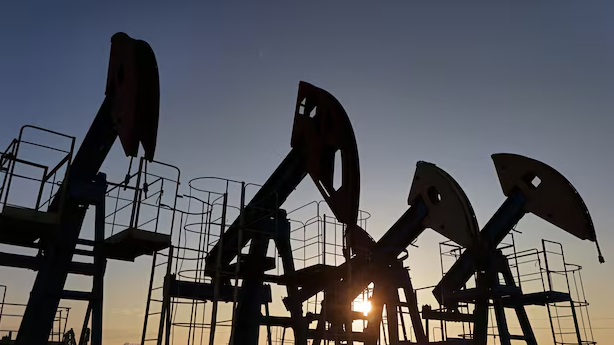
US President Donald Trump’s threat to impose financial penalties on Russia has turned attention to the two largest buyers of Russian crude — India and China — though markets have so far shown little concern about potential disruption.
Trump announced new weapons for Ukraine on Monday and warned that countries buying Russian exports could face sanctions unless Russia agrees to a peace deal — a major policy shift driven by frustration over Moscow’s continued attacks on Ukraine.
India became a major buyer of Russian oil after the Ukraine war began in early 2022. More than a third of India’s total oil imports this year have come from the OPEC+ producer, up from under 1 per cent before the war, based on data from the global commodity tracking firm Kpler. Over the same period, China’s imports of Russian oil have also risen.
India’s purchases of Russian crude climbed to their highest level in nearly a year in June, as domestic refiners built up stocks amid rising tensions in West Asia, particularly the Israel-Iran conflict. According to Kpler data, India imported 2.08 million barrels per day (bpd) of Russian crude last month, the highest volume since July 2024.
Despite Trump’s comments, the initial market response has been muted. Brent crude, the global benchmark, fell by almost 2 per cent on Monday and closed below $70 a barrel. This suggests traders are not yet concerned about disruptions to oil flows.
Trump said the penalties would be in the form of “secondary tariffs” and did not provide further details. He said the measures would take effect in 50 days if Russia does not stop its military campaign in Ukraine. According to Matt Whitaker, the US ambassador to NATO, the move effectively amounts to sanctions on countries buying Russian oil.
Whitaker mentioned India and China by name.
China’s imports of Russian oil have not grown as sharply as India’s, but they have remained steady at over 1 million barrels per day since the war began.
“If push really comes to shove, and India cannot buy any crude oil from the Russian system, then India has optionality with the other OPEC members,” Bloomberg cited Mukesh Sahdev, head of commodity markets at Rystad Energy A/S. But “it will be at a higher cost,” he added.
Oil from the Middle East and Africa could make up for the shortfall, but it would come at a higher price. Indian government data shows that imports from Saudi Arabia in May cost $5 a barrel more than those from Russia, while shipments from Iraq were about 50 cents more expensive.
India relies on imports to meet more than 85 per cent of its crude oil needs. While the Middle East was historically the main supplier, Russia has taken the lead in the past three years. After Russia’s invasion of Ukraine in February 2022, Western sanctions led Russian sellers to offer deep discounts, encouraging Indian refiners to shift sourcing. Russia now provides nearly 40 per cent of India’s crude oil imports.
A June report by the Centre for Research on Energy and Clean Air (CREA) on Russian exports showed that China accounted for 47 per cent of Moscow’s crude sales, followed by India at 38 per cent . The European Union and Turkiye each made up 6 per cent .
(with agency inputs)


